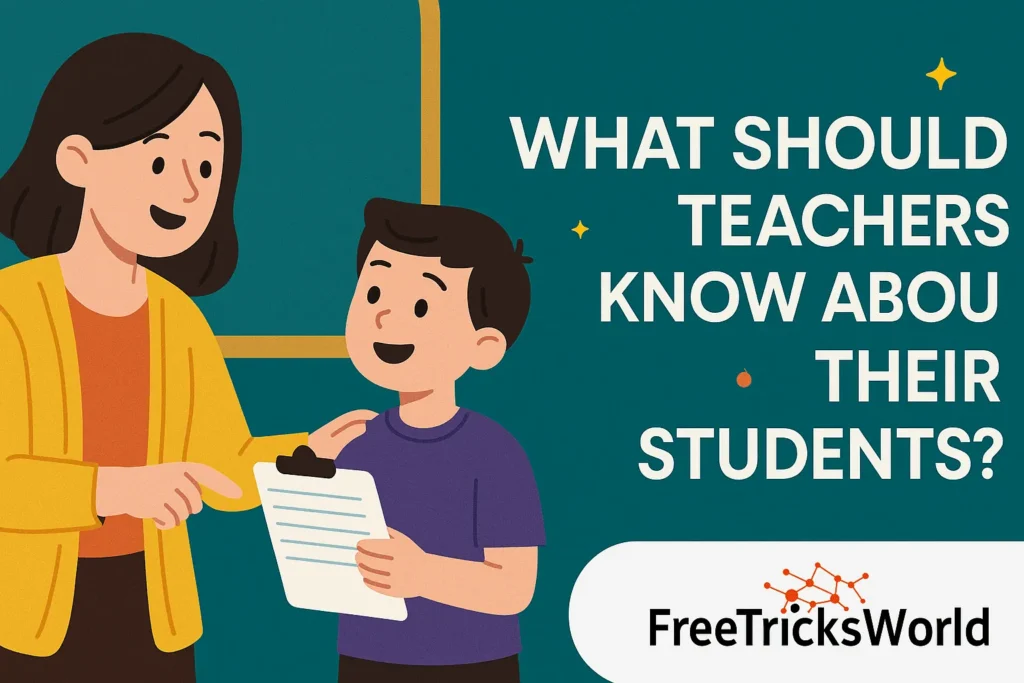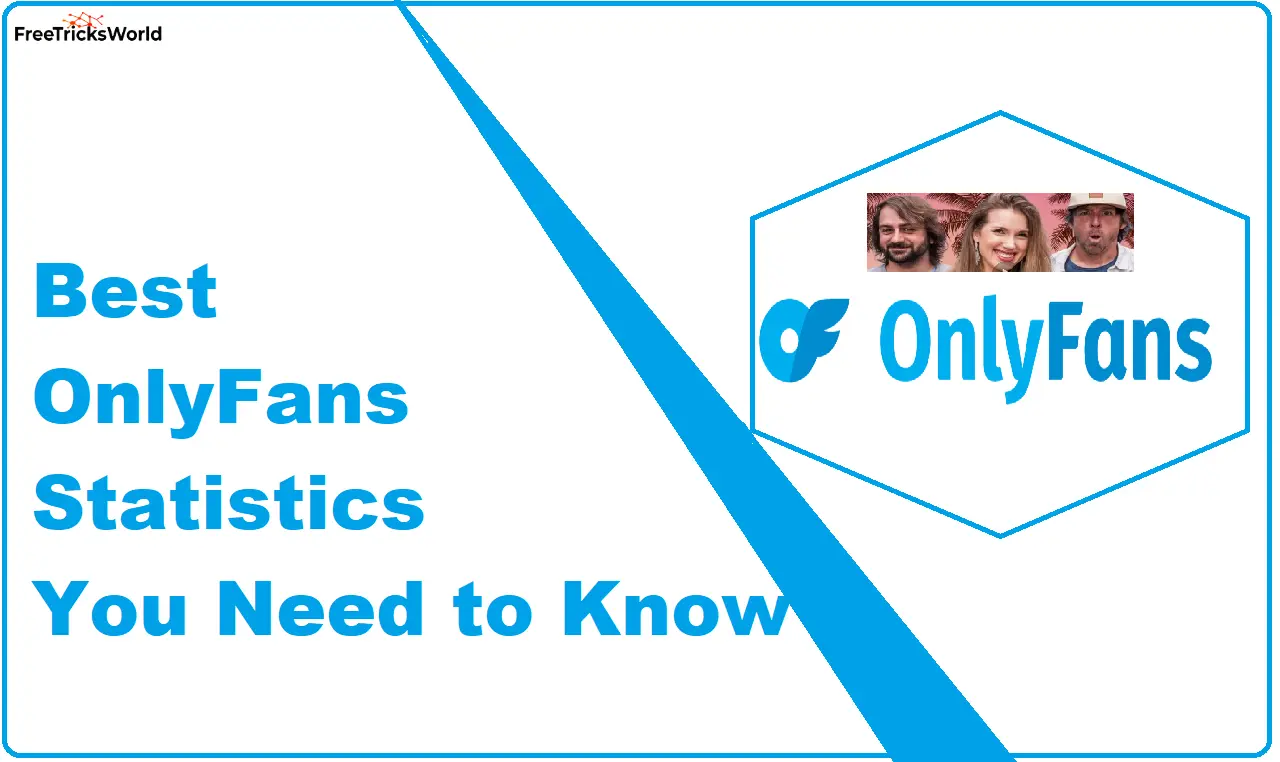What Should Teachers Know About Their Students
Teaching isn’t merely content delivery; it’s a complex human interaction. The most powerful tool a teacher possesses isn’t a textbook or a smartboard – it’s deep, contextual knowledge of the individuals in their classroom. Knowing students profoundly impacts engagement, differentiation, classroom climate, academic achievement, and socio-emotional well-being.
This knowledge isn’t static; it’s an ongoing, dynamic process of observation, interaction, and reflection. It forms the bedrock of EEAT (Experience, Expertise, Authoritativeness, Trustworthiness) for educators, demonstrating a commitment to truly individualized and effective practice.

8 Things A Teacher Must Know About Their Students
- Academic Readiness & Learning Profiles (The Cognitive Blueprint):
- Prior Knowledge & Skill Gaps: What foundational concepts do they truly grasp? Where are the misconceptions or critical gaps hindering new learning? Use diagnostic assessments (pre-tests, concept maps, quick writes), analyze previous work, and engage in targeted questioning before launching new units.
- Learning Strengths & Challenges: Beyond simplistic “learning styles,” understand their cognitive processing. Do they excel at verbal reasoning but struggle with spatial tasks? Are working memory limitations impacting multi-step problems? Observe problem-solving approaches and note patterns in successes and struggles.
- Academic Stamina & Work Habits: How long can they sustain focused effort? What are their organizational systems (or lack thereof)? Do they rush, procrastinate, or persevere through difficulty? Identify barriers to independent work completion.
- Literacy & Numeracy Fluency: Assess reading comprehension levels (silent vs. oral), vocabulary depth, writing fluency/mechanics, and fundamental numeracy skills. These underpin success across all subjects.
- Critical Thinking & Problem-Solving Tendencies: Do they jump to conclusions, methodically test hypotheses, or get stuck easily? How do they approach novel challenges? Scaffold complex thinking with specific strategies.
- Cognitive & Developmental Stages (The Growing Mind):
- Age-Appropriate Expectations: Understand typical cognitive, social, emotional, and physical development for the age group (Piaget, Vygotsky, Erikson). Know that a 6-year-old’s attention span differs vastly from a 16-year-old’s, and their social needs evolve dramatically.
- Individual Variations: Recognize that development isn’t uniform. Some students may exhibit advanced reasoning but lag in social skills, or vice versa. Avoid rigid expectations based solely on chronological age.
- Executive Functioning Skills: Crucial for school success! Assess their developing abilities in working memory, cognitive flexibility (shifting tasks/strategies), inhibitory control (impulse regulation), planning, and organization. Explicitly teach and support these skills where needed.
- Metacognition: Do they think about their own thinking? Can they identify when they understand or are confused? Can they plan, monitor, and evaluate their learning strategies? Foster metacognitive awareness through reflection prompts and strategy discussions.
- Interests, Passions, & Motivations (The Inner Spark):
- Authentic Interests: What topics, activities, hobbies, or questions genuinely excite them outside of school? (Sports, animals, gaming, art, music, family, social justice, technology, etc.).
- Intrinsic vs. Extrinsic Motivation: What truly drives them? The joy of learning itself (intrinsic), or grades, rewards, or avoiding punishment (extrinsic)? Aim to connect learning to intrinsic interests whenever possible.
- Aspirations & Future Goals: What do they dream of becoming or doing? Even young children have ideas. Understanding these provides powerful context for relevance (“Learning this math helps architects design buildings”).
- Relevance Seekers: Students constantly ask, “Why do I need to know this?” Knowing their interests and goals allows you to tailor examples, projects, and readings to demonstrate tangible relevance, boosting engagement significantly.
- Social-Emotional Landscape (The Heart of the Matter):
- Emotional Regulation: How do they manage frustration, excitement, disappointment, or anxiety? Do they withdraw, act out, seek help, or self-soothe effectively? Recognize triggers and support coping strategies.
- Self-Concept & Confidence: What is their academic self-efficacy? Do they see themselves as capable learners? What about their social self-image? Build confidence through scaffolded successes and specific praise.
- Social Skills & Relationships: How do they interact with peers? Are they leaders, collaborators, followers, or isolated? Do they navigate conflict constructively? Observe group dynamics and social interactions during unstructured times.
- Empathy & Perspective-Taking: Can they understand and consider others’ feelings and viewpoints? Foster this through literature, role-playing, and class discussions on diverse experiences.
- Resilience & Grit: How do they respond to setbacks and challenges? Do they persevere or give up easily? Teach growth mindset and celebrate effort and learning from mistakes.
- Background, Identity, & Culture (The Contextual Self):
- Cultural Heritage & Values: Understand the cultural norms, communication styles, values (e.g., collectivism vs. individualism), and traditions that shape their worldview and family interactions. Avoid stereotypes; seek individual understanding.
- Language Background: Is English their first language? Are they multilingual? What is their proficiency level in academic English vs. social/conversational English? Support language development without diminishing home languages.
- Family Structure & Dynamics: Who are the key caregivers? What is the home environment like? What are family expectations regarding education and behavior? Communicate respectfully and inclusively with diverse family structures.
- Socioeconomic Context: Be aware of potential impacts of economic hardship (food insecurity, lack of resources, unstable housing, limited access to technology/enrichment) or privilege on their experiences, stress levels, and available support. Approach with sensitivity, not assumption.
- Religious/Spiritual Beliefs: Understand how these might influence perspectives, practices (e.g., dietary needs, holidays), and values. Create an inclusive environment that respects diverse beliefs.
- Race, Ethnicity, & Lived Experience: Acknowledge how systemic factors and individual experiences related to race and ethnicity shape their school experience. Be aware of potential biases (your own and systemic) and actively work towards an anti-racist, equitable classroom. Validate their experiences.
- Physical & Mental Well-being (The Whole Child):
- Health Considerations: Be aware of chronic illnesses (asthma, diabetes, allergies), physical disabilities, medications, or frequent health issues that might impact attendance, energy levels, focus, or participation. Ensure accommodations are met.
- Sensory Processing Needs: Are they sensitive to noise, light, textures, or smells? Do they seek sensory input? Understand how the classroom environment might be overwhelming or under-stimulating and make adjustments.
- Mental Health: Be observant for signs of anxiety, depression, ADHD, trauma responses, or other mental health challenges. Know school resources (counselors, psychologists) and protocols for referral. Create a safe, supportive, and de-stigmatizing environment. Understand the profound impact of adverse childhood experiences (ACEs) and adopt trauma-informed practices.
- Sleep & Nutrition: Recognize that fatigue or hunger significantly impair learning and behavior. Advocate for school breakfast/lunch programs and be mindful of energy dips.
- Communication Styles & Preferences (The Bridge of Understanding):
- Verbal Expression: Are they articulate, hesitant, talkative, or quiet? Do they prefer sharing in large groups, small groups, pairs, or writing? Offer varied participation options (think-pair-share, online forums, exit tickets).
- Non-Verbal Cues: Learn to read their body language – facial expressions, posture, eye contact (or avoidance) – which often convey more than words. Understand cultural differences in non-verbal communication.
- Receptive Language: How well do they understand verbal instructions, complex vocabulary, or nuanced explanations? Check for understanding frequently using diverse methods (thumbs up/down, quick summaries, “tell your partner”).
- Preferred Feedback Channels: Do they respond best to written comments, verbal conferences, rubrics, or specific models? Tailor feedback for maximum impact.
- Technology Fluency & Preferences: How comfortable are they with digital tools? What platforms do they use naturally? Leverage technology for communication and learning where appropriate, but don’t assume universal access or fluency.
- Behavior as Communication (Decoding the Message):
- Understanding the “Why”: Recognize that disruptive, withdrawn, or challenging behavior is rarely arbitrary. It’s communication – often signaling unmet needs (academic frustration, social anxiety, sensory overload, seeking attention, escaping a demand, reacting to trauma/stress).
- Patterns & Triggers: Look for antecedents (what happens right before the behavior) and consequences (what typically follows). What environments, tasks, times of day, or interactions trigger certain behaviors?
- Functional Behavior Assessment (FBA): For persistent challenging behaviors, collaborate with specialists to formally understand the function and develop a Behavior Intervention Plan (BIP).
- Focus on Needs, Not Just Actions: Respond to the underlying need driving the behavior while setting clear, consistent boundaries and teaching replacement skills.
Also Read: Why are essay writing services important
How to Gather This Knowledge Ethically & Effectively
- Observation: Intentional, non-judgmental observation during various activities (independent work, group tasks, recess, transitions) is primary. Take anecdotal notes.
- Surveys & Inventories: Use interest surveys, learning preference questionnaires (use cautiously re: learning styles myths), “get to know you” forms (include open-ended questions about strengths, challenges, hopes).
- Student Conferences: Regular, brief, one-on-one check-ins for academic progress, goal setting, and relationship building. Ask open-ended questions (“How’s this going for you?” “What’s feeling tricky?”).
- Academic Assessments: Analyze formative and summative assessments for patterns, not just grades. Use pre-assessments.
- Student Work Analysis: Look at drafts, journals, problem-solving steps, and creative projects for insights into thinking processes.
- Dialogue & Active Listening: Create opportunities for authentic conversations. Listen more than you speak. Practice reflective listening (“So, what I hear you saying is…”).
- Family Partnerships: Engage caregivers through respectful communication (phone calls, emails, conferences, newsletters). Seek their insights about their child’s strengths, needs, and home context. Important: Always follow school/district protocols and maintain confidentiality.
- Collaboration: Consult with school counselors, psychologists, social workers, special educators, ESL teachers, and previous teachers (with permission and following privacy laws like FERPA).
- Reflective Practice: Regularly reflect on your interactions, observations, and student outcomes. What does this tell me? How can I adjust?
Also Read: How to unblock quizlet plus answers
Applying Knowledge: From Insight to Impact
- Differentiation: Tailor content, process, product, and learning environment based on readiness, interest, and learning profile. This is the most direct application of knowing your students.
- Personalized Learning: Connect curriculum to individual interests and goals. Offer choices in topics, resources, or demonstration of understanding.
- Targeted Interventions & Enrichment: Use data and observation to provide specific support for struggling students and meaningful challenges for advanced learners.
- Building Relationships: Use knowledge of interests, background, and communication styles to build authentic rapport and trust. Greet students by name, reference their interests, show genuine care.
- Creating a Safe & Inclusive Climate: Foster belonging by validating identities, cultures, and experiences. Address bias and microaggressions swiftly. Design activities that promote collaboration and appreciation of diversity.
- Effective Communication: Adapt your communication style (with students and families) to be most effective and respectful.
- Motivational Strategies: Leverage intrinsic interests and connect learning to personal goals. Provide choices and autonomy where possible.
- Behavior Support: Understand the root cause of behavior to implement proactive strategies and teach replacement skills, rather than relying solely on punishment.
- Culturally Responsive Teaching: Integrate diverse perspectives into the curriculum, use culturally relevant examples, and validate students’ cultural knowledge.
Also Read: Top 11 Reasons Why You Should Use Online Writing Services
Ethical Considerations
- Confidentiality: Student information is highly sensitive. Adhere strictly to FERPA and school policies. Only share information with other professionals on a “need-to-know” basis for educational purposes.
- Avoiding Bias & Stereotyping: Knowledge gathering must be objective and individualized. Constantly challenge your own implicit biases. See the student, not just a category.
- Building Trust: Knowledge is built on trust. Be consistent, reliable, fair, and demonstrate genuine care. Follow through on promises.
- Respectful Curiosity: Approach learning about students with humility and respect, not intrusion. Explain why you are gathering certain information.
- Focus on Strengths: Frame knowledge in terms of assets and potential, not just deficits. Build on strengths.
- Action-Oriented: Knowledge is meaningless without application. Use insights to inform teaching decisions and positively impact students.
- Evidence-Based: Ground your practices in established educational research and psychology.
- Integrity & Transparency: Be honest with students and families. Admit mistakes. Uphold ethical standard.
Also Read: Errors Found in College and University Essays
Conclusion
Knowing students deeply is not a luxury; it’s the ethical and pedagogical imperative at the heart of transformative teaching. It moves instruction from a one-size-fits-none model to a dynamic, responsive practice that honors the unique humanity of every learner. This multidimensional knowledge – spanning academics, development, emotions, identity, well-being, communication, and behavior – empowers teachers to:
- Unlock individual potential
- Build resilient, confident learners
- Foster truly inclusive communities
- Make learning relevant and engaging
- Navigate challenges with empathy and effectiveness
- Advocate powerfully for student needs
The journey to know your students is continuous and ever-evolving. It requires intentionality, humility, observation, dialogue, and reflection. It is the most demanding and rewarding work of teaching. By committing to this deep knowing, grounded in EEAT principles, educators don’t just teach subjects; they nurture human beings and create classrooms where every student feels seen, valued, challenged, and empowered to thrive.






